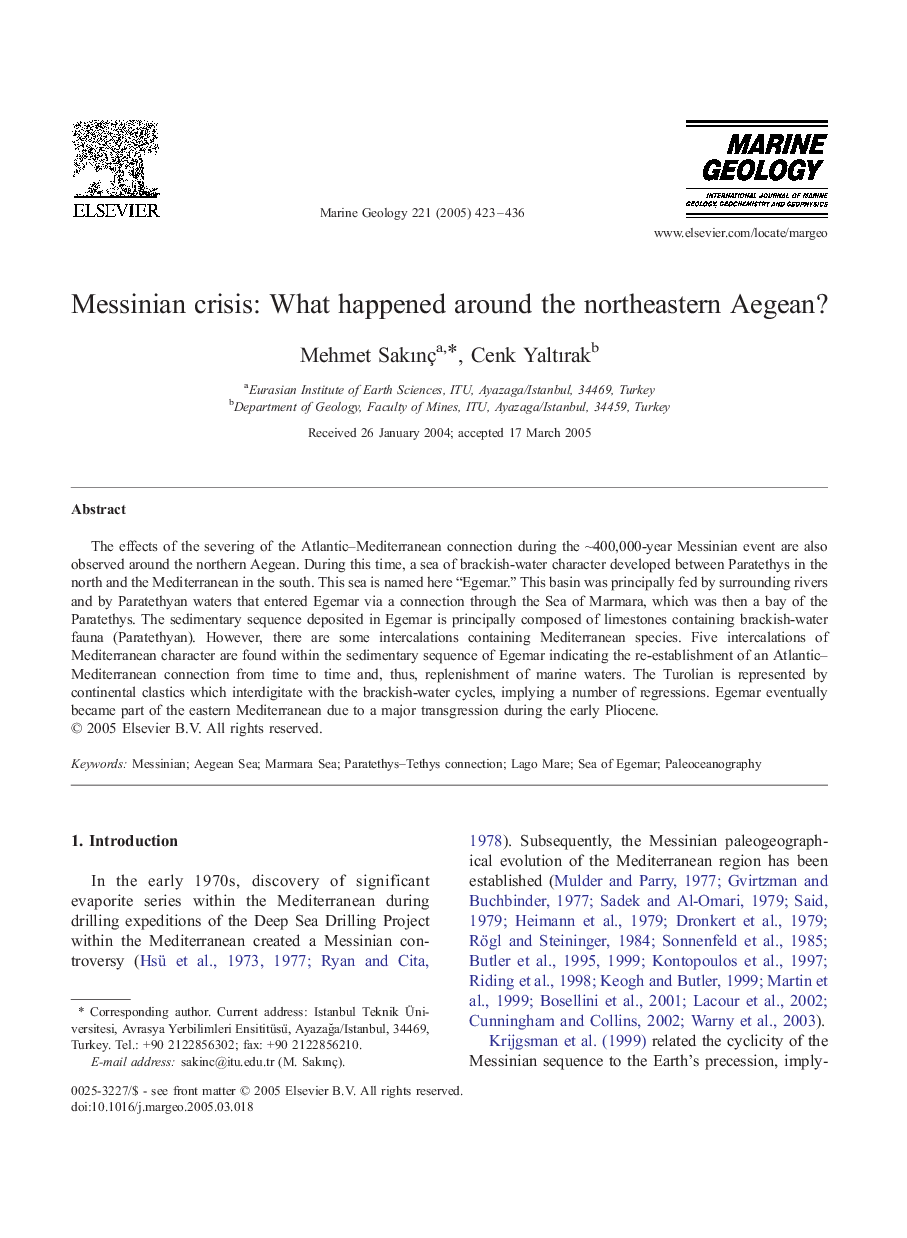| Article ID | Journal | Published Year | Pages | File Type |
|---|---|---|---|---|
| 9532529 | Marine Geology | 2005 | 14 Pages |
Abstract
The effects of the severing of the Atlantic-Mediterranean connection during the â¼400,000-year Messinian event are also observed around the northern Aegean. During this time, a sea of brackish-water character developed between Paratethys in the north and the Mediterranean in the south. This sea is named here “Egemar.” This basin was principally fed by surrounding rivers and by Paratethyan waters that entered Egemar via a connection through the Sea of Marmara, which was then a bay of the Paratethys. The sedimentary sequence deposited in Egemar is principally composed of limestones containing brackish-water fauna (Paratethyan). However, there are some intercalations containing Mediterranean species. Five intercalations of Mediterranean character are found within the sedimentary sequence of Egemar indicating the re-establishment of an Atlantic-Mediterranean connection from time to time and, thus, replenishment of marine waters. The Turolian is represented by continental clastics which interdigitate with the brackish-water cycles, implying a number of regressions. Egemar eventually became part of the eastern Mediterranean due to a major transgression during the early Pliocene.
Related Topics
Physical Sciences and Engineering
Earth and Planetary Sciences
Geochemistry and Petrology
Authors
Mehmet Sakınç, Cenk Yaltırak,
